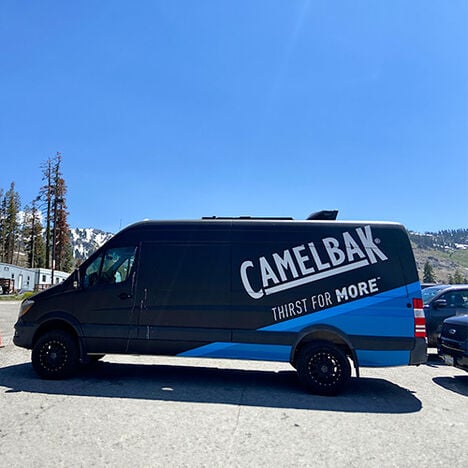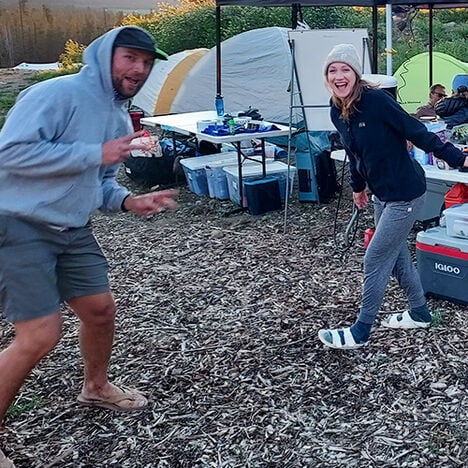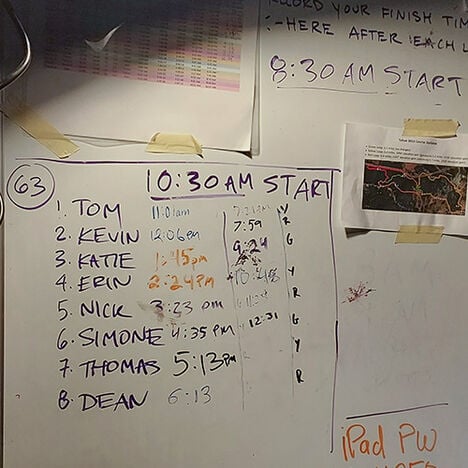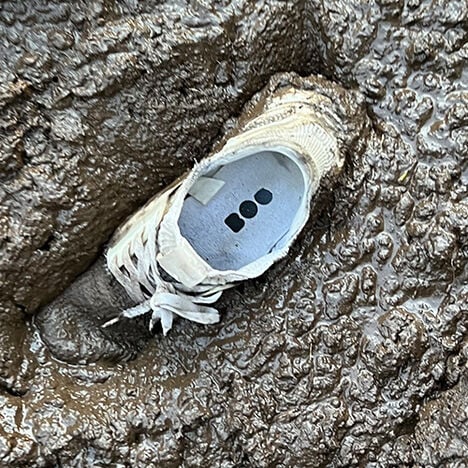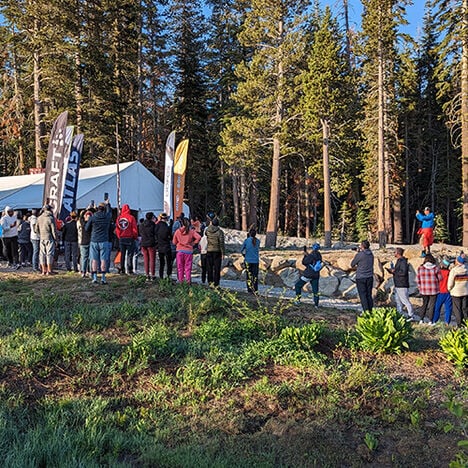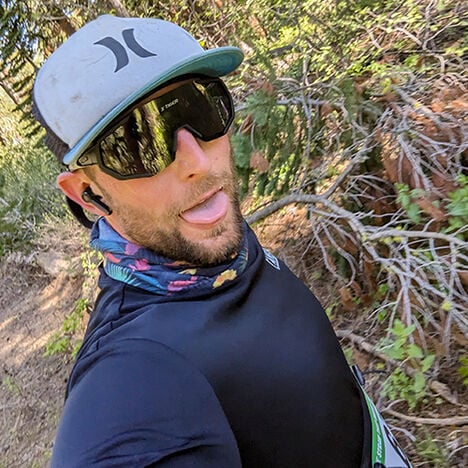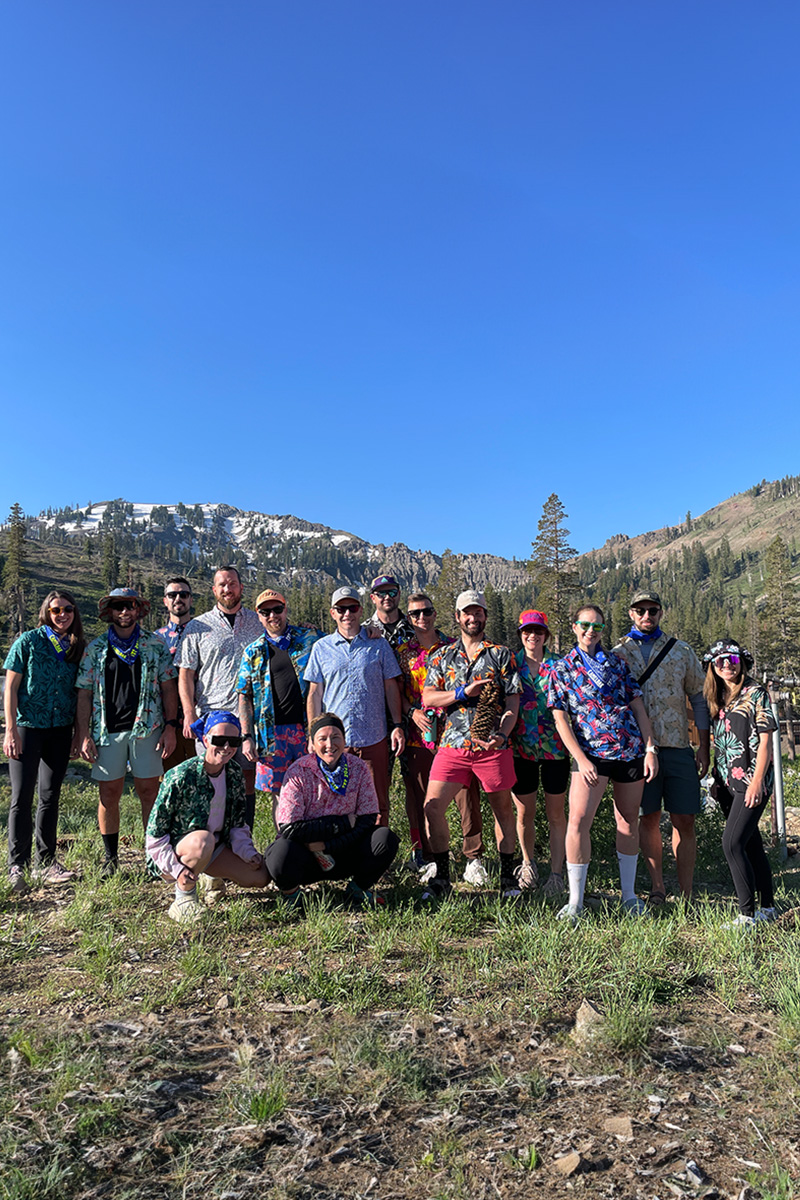
Running the Ragnar Trail Tahoe
Erin Jones is an athlete, mom, and Senior Manager on the Product Development team here at CamelBak. It was her idea to get a handful of her co-workers together to tackle the Ragnar Trail Tahoe together.
How the Race Works
The Ragnar Trail Tahoe is a continuous, two-day trail running race through the Sierra Nevada Mountains. Teams of eight runners work together to run a total of 24 relay legs. Every runner runs three legs. There are different loops, all in varying degrees of difficulty, distance, and elevation to climb. Every runner runs each loop for a total of about 16 miles and 2,200 feet of elevation gain. It’s a serious challenge even for the most hardened athletes. But Jones doesn’t consider herself to be all that hardcore. “I’m not some super-badass well-seasoned distance runner,” she says. “I’m just a slightly athletic middle-aged person that enjoys running. And I really do enjoy running, even the parts that hurt. My life is hectic and busy and when I’m out there, everything calms down.
The of structure Ragnar Trail Tahoe is what makes it special. As Jones puts it, “The cadence of the loops allow each runner to run every 6 to 7 hours, so everyone gets to run at least one leg in the middle of the night, which is pretty wild. There’s a basecamp at the start and finish line, and that’s where all teams set up camp to sleep, eat, and hangout. The toughness of the altitude, terrain, distance, and sleep deprivation layered over the beauty of the mountains, the joy of team bonding, and euphoria of overcoming the challenge creates a unique experience.”
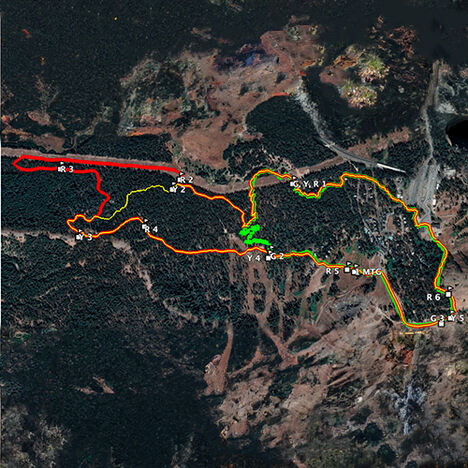
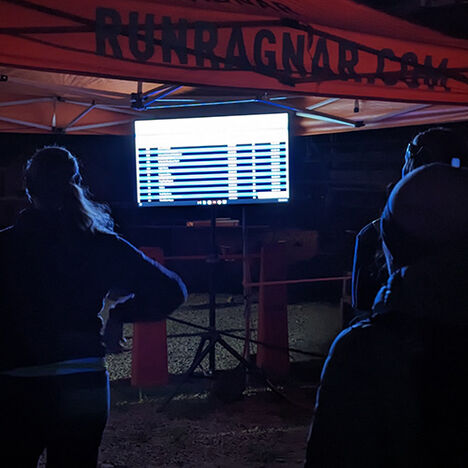
Tackling the Trail as a Team
The Ragnar is a race that’s only possible to complete together. It’s what drew Jones and the rest of the Camelbak team to want to compete. “A relay race is unique because you rely on your team so heavily,” she explains. “Someone has to be there when you finish, to keep the train moving. When I was exhausted and depleted at the end of my legs, it would give me an extra boost to see my teammate waiting for me, fresh and ready to take off.”
“The management of the run cadence of the Ragnar is just as important as the physical and mental elements, because you need to be awake and ready to pass the baton at all hours of the night,” Jones says. “Our team captains (CamelBak employees) were amazing. They’re both seasoned runners and kept the teams updated, motivated, and informed for the months leading up to the race, and throughout the actual race days. We knew exactly what to expect because of them and they were our biggest cheerleaders. We really lucked out with those two.”
Training Regimen
When you want to compete in a race as grueling as the Ragnar, it’s important to train properly. Over the years, Jones has found a system that suits her schedule. “Three short runs and one long run per week over 3 to 4 months is a formula that has usually worked well for me when training for long distance races,” she says. “I live in Marin, California where there are lots of trails and hills, so I incorporated those into my runs every week. I admittedly often skip cooling down after running, so I paid closer attention to that more than I have before. I also practiced fueling on the move, running with a headlamp, and made sure I slept well the nights prior to the race.”
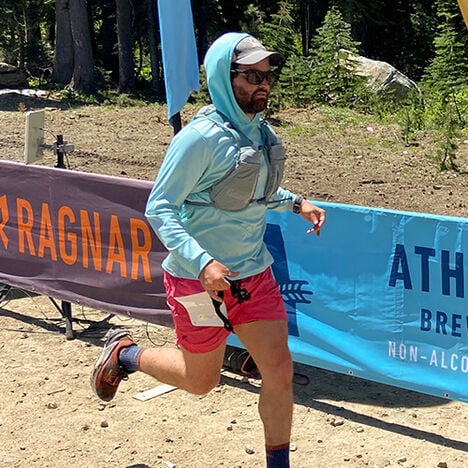
It can be tough to balance a rigorous training schedule with family commitments and work meetings, but Jones says it’s important to be strict where you can and able to adapt when you can’t. “I kept it simple and decided early on where I’d stay rigid and where I was willing to bend the rules,” she says. “I don’t love to make a habit of skipping runs, so I was firm about sticking to that 3 short + 1 long regimen, but I also allowed for some flexibility on which days of the week and time of day those runs would occur. When you have kids, it definitely helps to have a patient partner. Thank you, Allen!”
“Sometimes, on the other side of discomfort is that runner’s high that people talk about. It’s a real thing and it makes me feel like I’m at the Olympics in a Wheaties commercial. Just knowing that’s coming usually gets me through.”
Staying Sharp
With a race so long and arduous, it could be easy to listen to the little voice in the back of your head begging you to slow down or take a break. But to complete the Ragnar, you need to find a way to push through the pain and exhaustion and find a way forward. For Jones, that knowledge came with experience. “Through my years of running, I know my body and I know the difference between being in pain and being uncomfortable,” Jones says. “I’m okay to sit in the uncomfortable because I know that usually, but not always, the discomfort wanes. And sometimes, on the other side of discomfort is that runner’s high that people talk about. It’s a real thing and it makes me feel like I’m at the Olympics in a Wheaties commercial. Just knowing that’s coming usually gets me through.”
Choosing The Right Gear
For an overnight race, it’s important to bring along the right gear to make sure you stay safe, fast, and able to finish strong. “I’m a minimalist when it comes to running gear,” Jones says. “My preference is our Camelbak Ultra Belt to stay hydrated, because of the low center of gravity and the way it ensures nothing bounces around. In the belt, I can carry one or two of our 17oz Quick Stow Flasks, GUs, Chapstick, and my phone.”
Getting Out There
If you’re interested in tackling a long-distance race for the first time, but are feeling a little hesitant, Jones has some advice. “If you’re even a little curious, do it!” she says. “The human body is a crazy machine and it’s amazing what it can do when it’s challenged.”
As for Jones? “I’m not sure what’s next. I usually need some time between big challenges like this, enough time to forget how hard they are!”
Moments from the trail
